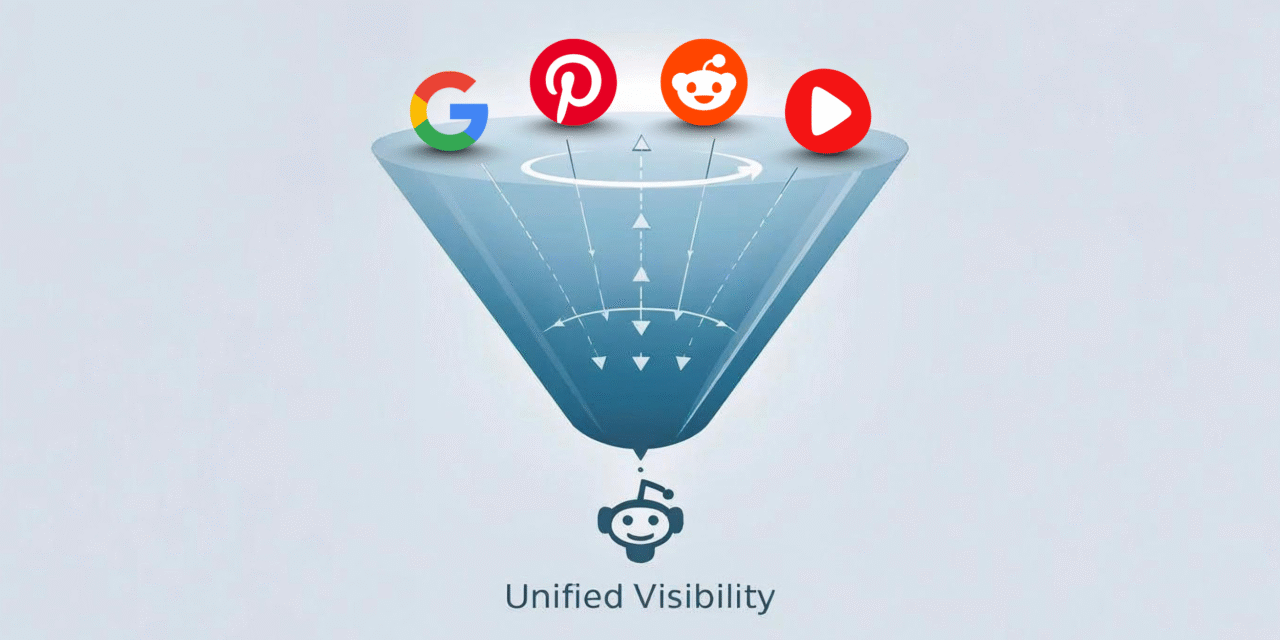
In today’s digital age, relying solely on Google for search visibility is no longer enough. With younger generations like Gen Z turning to platforms such as Pinterest, and Reddit for information, brands must adopt a total search strategy to stay relevant. This approach goes beyond traditional search engines, integrating multiple platforms to ensure a holistic and resilient online presence.
Let’s explore how brands can reduce their dependency on Google, diversify their search efforts, and connect with audiences where they spend their time online.
Why Relying Only on Google Is Risky
Google remains the dominant player in the search engine market, but it’s not without its challenges:
- Algorithm Changes: Google updates its algorithms frequently, which can drastically impact website rankings overnight.
- Over-Reliance: Businesses that depend solely on Google risk losing traffic if rankings drop unexpectedly.
- Shifting Search Behavior: Younger audiences are increasingly using alternative platforms like Pinterest for discovery.
By diversifying your search strategy, you can mitigate these risks and expand your reach across multiple platforms.
What Is a Total Search Strategy?
A total search strategy involves leveraging multiple search and discovery platforms to create a well-rounded online presence. Instead of focusing only on Google SEO, this approach taps into the unique strengths of platforms like Pinterest, Reddit, YouTube, and more.

The goal is simple: meet your audience where they are already searching and engaging.
Before diving into new platforms, it’s crucial to understand your audience’s preferences and behaviors. Where do they spend their time online? What platforms do they use for discovery?
Simple steps to do audience research for SEO.
Here are some tools to help with audience research:
- Google Analytics 4 (GA4): Analyze referral traffic under Acquisition > Traffic Acquisition to identify where your visitors are coming from.
- Similarweb: Gain insights into competitors’ referral traffic and social media engagement patterns.
- SparkToro: Discover the websites, social accounts, and podcasts your audience interacts with most.
- First-Party Data: Use surveys or CRM data to gather direct insights from your existing customers.
- Ad Platforms: Platforms like Facebook Ads or LinkedIn Ads allow you to build audience segments based on demographics, job titles, or industries—even without running ads.
By combining these insights, you can pinpoint which platforms offer the most potential for reaching your target audience.
Once you’ve identified where your audience spends time online, it’s time to craft tailored strategies for each platform. Here’s how to prioritize effectively:
- Focus on platforms already driving traffic to your site (based on GA4 data).
- Analyze competitors’ performance on these platforms (using Similarweb).
- Evaluate the size of the addressable audience on each platform by setting up shell campaigns or research tools.
- Consider available resources—e.g., if you have video content ready, prioritize video-heavy platforms like YouTube.
Content Tailored to Each Platform
Every platform has its own norms and user behaviors. For example:
- On Pinterest, visually appealing pins optimized with keywords drive engagement.
- On Reddit, authentic participation in niche communities builds trust.
Tailoring content ensures you’re not just present but also effective in capturing attention.
Optimization isn’t just for Google—it applies across all platforms!
Like Pinterest requires keyword optimization within boards and pins using tools like the Pinterest Ads keyword research tool (accessible even without running ads).
By understanding each platform’s unique algorithms and mastering content, you can enhance discoverability.
Tracking performance across multiple platforms requires a holistic measurement approach. Here’s how you can do it effectively:
Key Metrics to Monitor:
- In-Platform Analytics: Use tools like LinkedIn Analytics for detailed engagement data.
- Total Search Referrals: Create a dashboard in GA4 that filters traffic sources by platform (e.g., Pinterest) to track referral trends over time.
- Engagement Metrics: Measure likes, shares, comments, and other engagement indicators specific to each platform.
By combining these metrics with traditional SEO data from Google Search Console or GA4, you’ll get a complete picture of your total search performance.
Real-Life Example of Diversification Success
Consider a small e-commerce brand that sells handmade jewelry. Initially reliant on Google SEO alone, the brand faced declining traffic after a core algorithm update. By diversifying into Pinterest:
- They used Pinterest Ads’ keyword tool to optimize their boards for high-volume searches like “handmade jewelry ideas.”
- Within three months, referral traffic from this platform grew by 40%, offsetting losses from Google.
This example highlights how diversification can safeguard against algorithm changes while opening new growth opportunities.
Getting Started Today
Ready to expand beyond Google? Here’s how you can get started right away:
- Audit your referral traffic using GA4.
- Research alternative platforms where your audience is active.
- Develop tailored content strategies for each platform based on user behavior.
- Start testing small campaigns or organic content strategies.
- Measure performance using both in-platform analytics and GA4 dashboards.
By taking these steps today, you’ll build a more resilient online presence that thrives regardless of changes in any single platform’s algorithm.
Final Thoughts
The digital landscape is evolving rapidly—search behavior is no longer confined to Google alone. By adopting a total search strategy that includes platforms like Pinterest, Reddit, and others, brands can stay ahead of the curve while connecting with audiences by achieving balanced online presence through total search strategy.

So why wait? Start diversifying today! Your future self—and your business—will thank you for it!